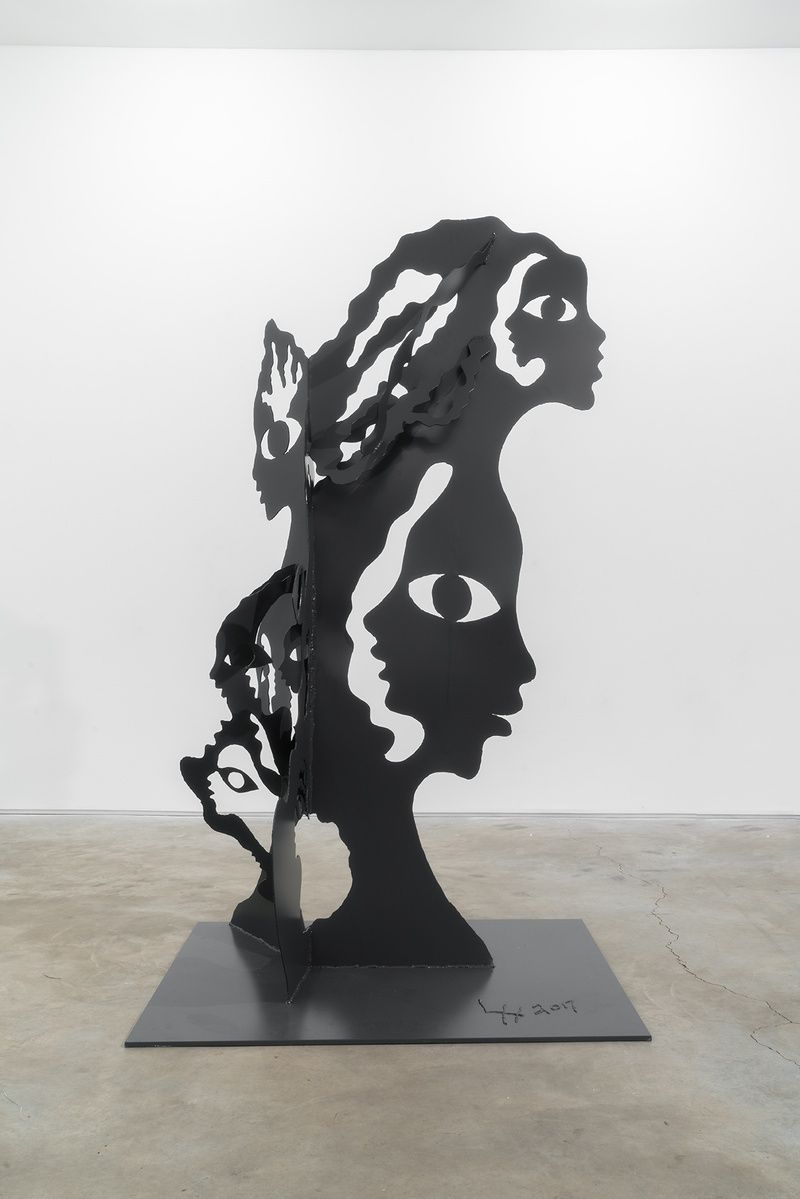James Fuentes Gallery
Lonnie Holley
The Weight of Everything
James Fuentes is pleased to announce a new solo exhibition by Lonnie Holley (Born 1950, Birmingham, AL). The Weight of Everything will focus on new wire and steel sculptures by the artist. This will be Holley’s third solo exhibition at the gallery, the most recent of which took place in the spring of this year. A statement on the works presented can be found below.
”I think really what got me interested in the wire sculptures was my grandmothers ways of using materials, my father’s mother, she used to get up and go to our city lot every morning and she would rake out these big bundles of copper, brass or aluminum, and she would ball them up, crush them as tight as she could, and put them in barrels. And later they would take them as a recycled material to the junkyard. So one day I just took a bundle of this wire out of her trash container and I start unweaving it and I kept unwinding it and I ended up straightening it out. And I made this beautiful butterfly for her, and I hung it up in the house, and when she got home that evening, the butterfly was there and when she saw it, she started crying.
A lot of these things I’m doing now is part of my appreciation of my ancestry or to my peoples or to my mother, grandmother, great grandmothers. And so a lot of times you come up with a lot of faces in my works, a lot of times you’re going to see a lot of connections, a continuous fold or continuous binding into one big head. A lot of people say, well he’s bringing it from a traditional point of view. I didn’t know that much about other people’s habits, I only learned what I have learnt from my family – my grandfather on my mother’s side, and the steel works that he did working in the industry, my father, and whatever his work habits were, even my grandfather’s work habits, and my great grandfather.
I got a telegram post, and it’s gonna be representing the last two storms that came through and devastated the lifestyles of humans. And what I mean by devastating, I mean really devastating to a point that they would not be able to go back and reclaim those properties.� It’s something that has scared me, that I have been told is about our actions and our involvement as a humanity. And we’re developing a sort of devastating development right now because of our Ozone layer.
With my metal work, I’m talking about conditioning of steel, conditioning of iron. If you look at the bleed off or rusting and deteriorating matter, all of that is in my works. I’m trying to tell people what we have built over the last 100 years, we need to really reinvestigate it, we need to think about it, because we are putting our trust, we’re putting some heavy weight on the roads right now, and a lot of the steel that we have implanted in our constructive manner, this steel is now rusted to pieces and it’s become an egg shell. So what I’m trying to do for you is give you the 911 and the emergencies before they occur. This show here hopefully will wake up Americans, the audience of the arts.”
- Lonnie Holley
Holley was included in the seminal exhibition More than Land and Sky: Art From Appalachia at the National Museum of American Art in 1981. His most recent solo exhibition, I Snuck off the Slave Ship, was held at the Atlanta Contemporary, GA (2017). Holley is currently featured at Mass MoCA as a highlighted artist in residence from the Rauschenberg Foundation in Captiva, FL. He is also included in the group exhibitions Animal Farm, curated by Sadie Laska at the Brant Foundation, Greenwich, CT; and Revelations: Art from the African American South at the De Young Museum, San Francisco, CA. The artist is included in public collections of the American Folk Art Museum, New York, NY; Birmingham Museum of Art, Birmingham, AL; Fine Arts Museums of San Francisco; High Museum of Art, Atlanta, GA; Metropolitan Museum of Art, New York; Milwaukee Museum of Art, Milwaukee, WI; Museum of Fine Arts, Houston, TX; New Jersey State Museum, Trenton, NJ; New Orleans Museum of Art, New Orleans, LA; Philadelphia Museum of Art, Philadelphia, PA; Smithsonian American åArt Museum, Washington, D.C.



